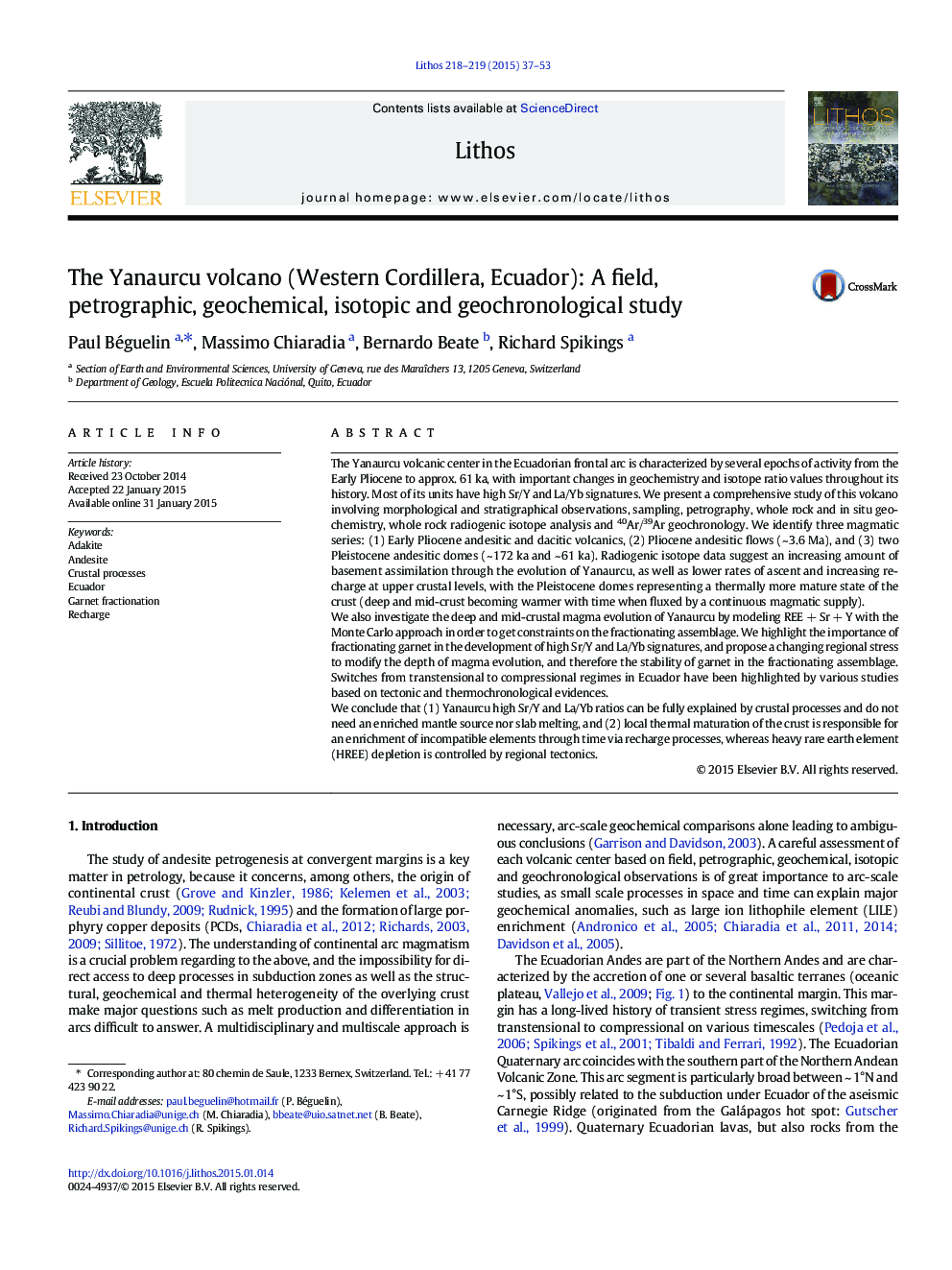| کد مقاله | کد نشریه | سال انتشار | مقاله انگلیسی | نسخه تمام متن |
|---|---|---|---|---|
| 4715749 | 1638667 | 2015 | 17 صفحه PDF | دانلود رایگان |

• We present the first geochemical, geochronological and isotopic data on Yanaurcu.
• Lower and mid-crustal magma evolution is modeled from trace element data.
• Increasing frequency of recharge processes leads to Sr and LREE enrichment with time.
• Regional tectonics control depth of magma evolution and HREE depletion.
• High Sr/Y and La/Yb signatures can be explained by crustal processes.
The Yanaurcu volcanic center in the Ecuadorian frontal arc is characterized by several epochs of activity from the Early Pliocene to approx. 61 ka, with important changes in geochemistry and isotope ratio values throughout its history. Most of its units have high Sr/Y and La/Yb signatures. We present a comprehensive study of this volcano involving morphological and stratigraphical observations, sampling, petrography, whole rock and in situ geochemistry, whole rock radiogenic isotope analysis and 40Ar/39Ar geochronology. We identify three magmatic series: (1) Early Pliocene andesitic and dacitic volcanics, (2) Pliocene andesitic flows (~ 3.6 Ma), and (3) two Pleistocene andesitic domes (~ 172 ka and ~ 61 ka). Radiogenic isotope data suggest an increasing amount of basement assimilation through the evolution of Yanaurcu, as well as lower rates of ascent and increasing recharge at upper crustal levels, with the Pleistocene domes representing a thermally more mature state of the crust (deep and mid-crust becoming warmer with time when fluxed by a continuous magmatic supply).We also investigate the deep and mid-crustal magma evolution of Yanaurcu by modeling REE + Sr + Y with the Monte Carlo approach in order to get constraints on the fractionating assemblage. We highlight the importance of fractionating garnet in the development of high Sr/Y and La/Yb signatures, and propose a changing regional stress to modify the depth of magma evolution, and therefore the stability of garnet in the fractionating assemblage. Switches from transtensional to compressional regimes in Ecuador have been highlighted by various studies based on tectonic and thermochronological evidences.We conclude that (1) Yanaurcu high Sr/Y and La/Yb ratios can be fully explained by crustal processes and do not need an enriched mantle source nor slab melting, and (2) local thermal maturation of the crust is responsible for an enrichment of incompatible elements through time via recharge processes, whereas heavy rare earth element (HREE) depletion is controlled by regional tectonics.
Journal: Lithos - Volumes 218–219, March 2015, Pages 37–53